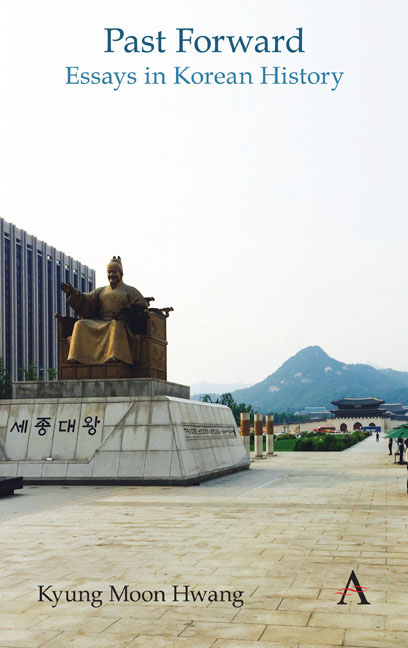Book contents
- Frontmatter
- Contents
- List of Figures
- Foreword
- Chronologies of Korean History
- Themes
- Acknowledgments
- Note on Romanization and Spelling
- Part I Circulating History
- Part II Durable Traditions
- Part III Ancient Remains
- Part IV Dynastic Depths
- Part V Modern Origins
- Part VI Challenges of Nationhood
- Part VII History Makers
- Part VIII External Presences
- 52 Korea's Complicated Relationship with China
- 53 How Chinese was Chinese History?
- 54 Tiananmen and the Power of History
- 55 Lotte between Korea and Japan
- 56 Comfort Women Beholden to History
- 57 A Modest Proposal for Dokdo
- 58 The General Sherman Incident of 1866
- 59 Depictions of the United States
- 60 Overcoming Old Views of Korea–United States Ties
- 61 Foreign Language Dependency
- Part IX Trials of Modernization
- Part X Gripped by the Past
- Index
56 - Comfort Women Beholden to History
from Part VIII - External Presences
- Frontmatter
- Contents
- List of Figures
- Foreword
- Chronologies of Korean History
- Themes
- Acknowledgments
- Note on Romanization and Spelling
- Part I Circulating History
- Part II Durable Traditions
- Part III Ancient Remains
- Part IV Dynastic Depths
- Part V Modern Origins
- Part VI Challenges of Nationhood
- Part VII History Makers
- Part VIII External Presences
- 52 Korea's Complicated Relationship with China
- 53 How Chinese was Chinese History?
- 54 Tiananmen and the Power of History
- 55 Lotte between Korea and Japan
- 56 Comfort Women Beholden to History
- 57 A Modest Proposal for Dokdo
- 58 The General Sherman Incident of 1866
- 59 Depictions of the United States
- 60 Overcoming Old Views of Korea–United States Ties
- 61 Foreign Language Dependency
- Part IX Trials of Modernization
- Part X Gripped by the Past
- Index
Summary
It became immediately clear that the agreement between the South Korean and Japanese governments on the “comfort women” issue was driven by the number “2015,” at least from the Korean side. It did not take a genius to figure this out. The South Korean foreign minister's opening remarks on December 28, 2015, to announce the accord stated that his government sought to find an “early resolution” to this “most crucial history-related issue” between the two countries. Why the hurry? Because this had to take place before the end of 2015.
That year marked the 50th anniversary of the 1965 treaty to restore diplomatic relations between South Korea and its former colonial master, Japan. Moreover, this 1965 agreement was pushed through over fierce protests by the father of President Park Geun-hye, Park Chung-hee, in order to gain access to money and technology. So the younger Park's motivation was not only to make a symbolic splash, but to reinforce and legitimize that controversial step from a half-century earlier. This effort to justify, enhance and exploit her father's deeds guided Park Geun-hye throughout her administration–to a disastrous point, as it turned out.
There were also other factors behind the comfort women agreement, of course, including geopolitical considerations like the shared fear of a rising China, though this was probably overstated. The influence of the United States, though, is another matter, which continues a long-standing historical pattern. Both South Korea's and Japan's post–World War II external relations have been dominated by the American security alliance.
Likewise, the post-WWII era in both Asian countries has mostly been led by rightist, anti-communist governing orders cultivated in the Cold War. In South Korea, such circumstances allowed regimes to justify their dictatorial rule through the pursuit of intensive economic development. Japan, though not as authoritarian, was nevertheless dominated politically by the Liberal Democratic Party (LDP), which emerged in the aftermath of the US occupation of Japan (1945–1952). In pursuit of their own interests, the Americans who helped establish the postwar Japanese order permitted the LDP and Japanese citizens to overcome their recent past by pretending they had little liability for the actions of the wartime military regime.
- Type
- Chapter
- Information
- Past ForwardEssays in Korean History, pp. 164 - 166Publisher: Anthem PressPrint publication year: 2019



